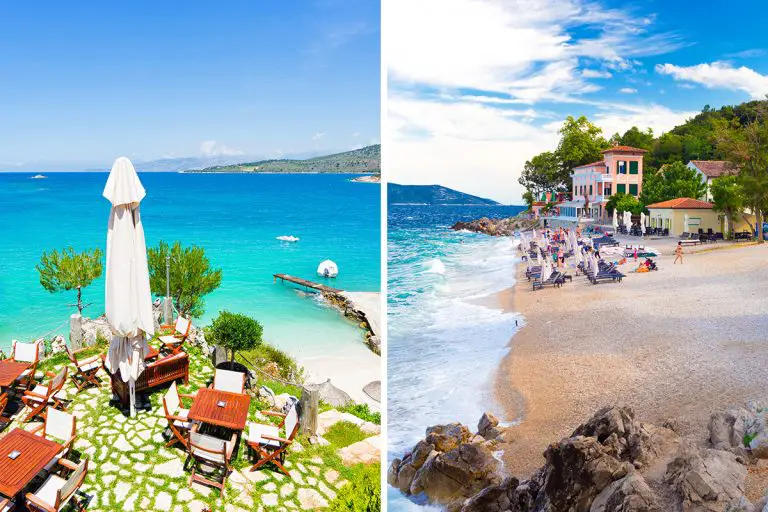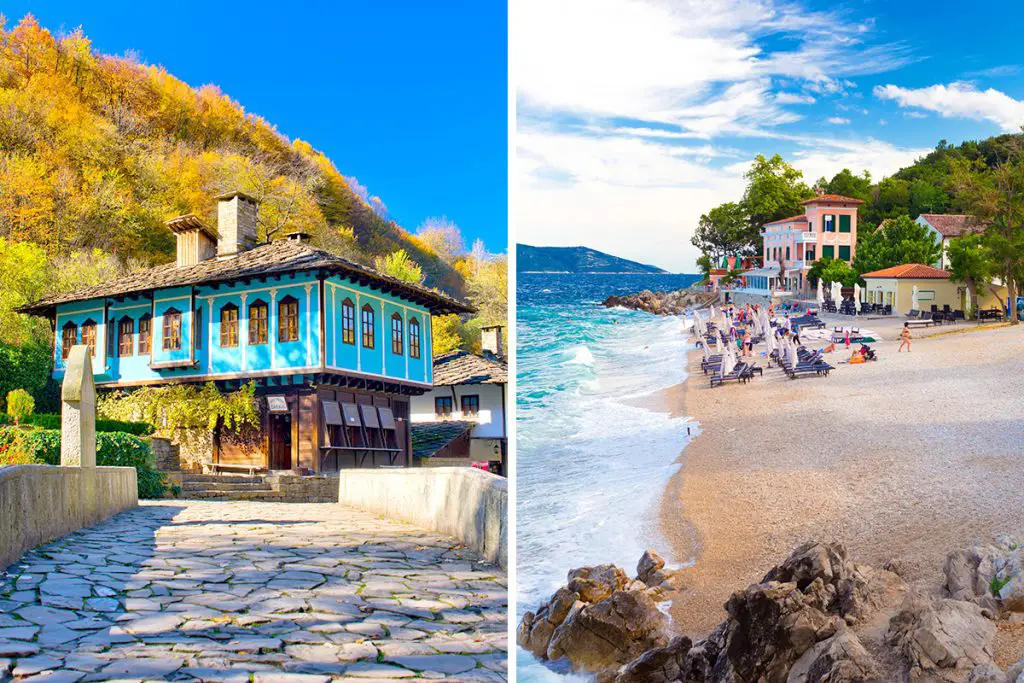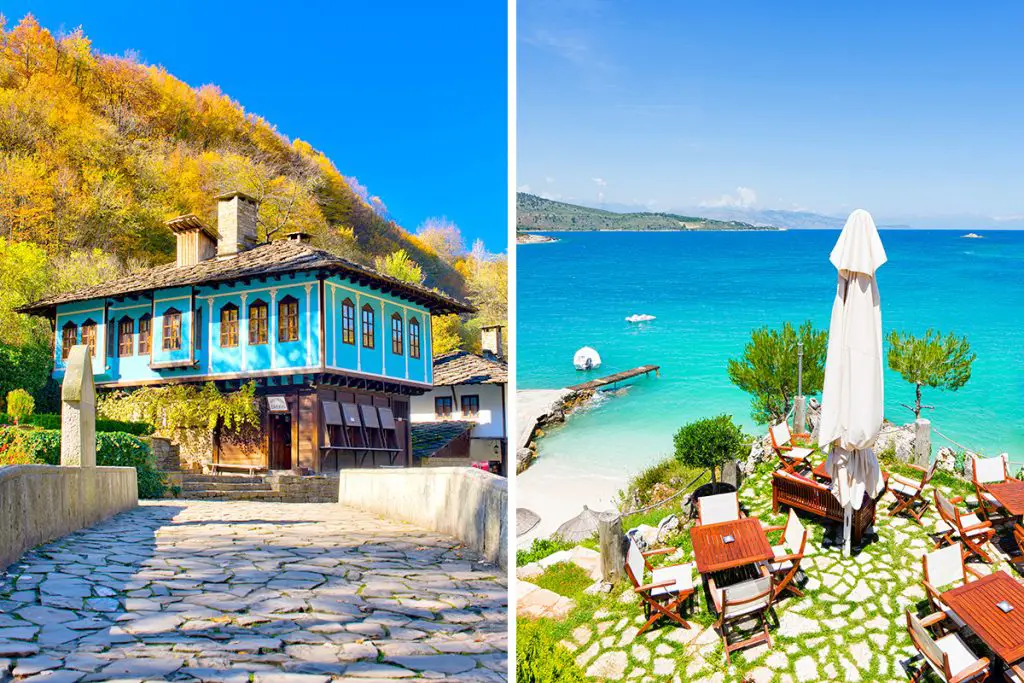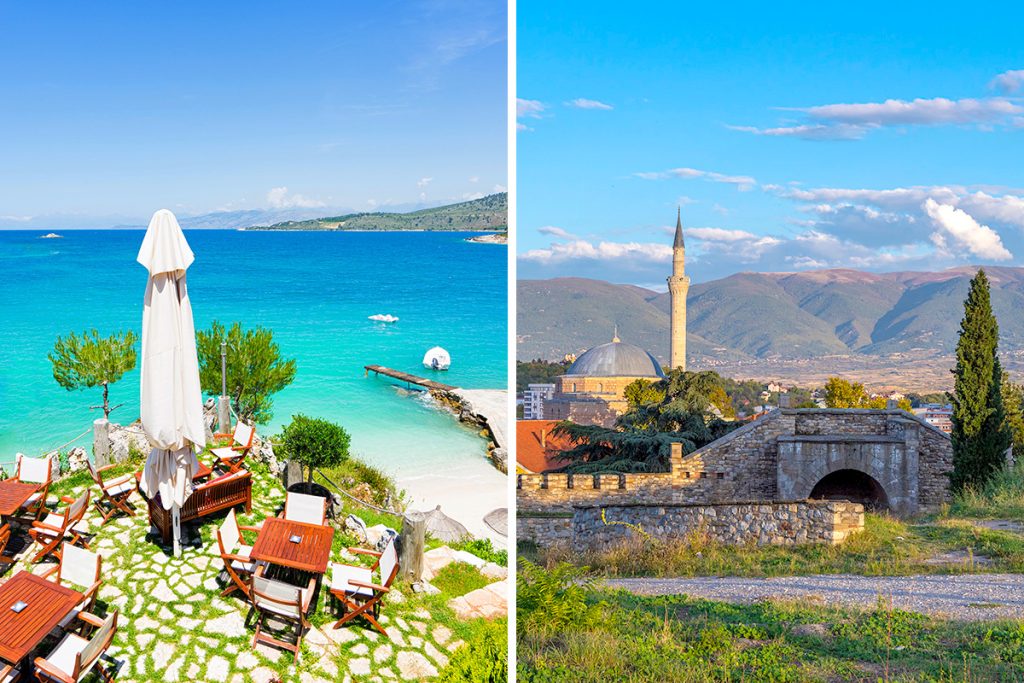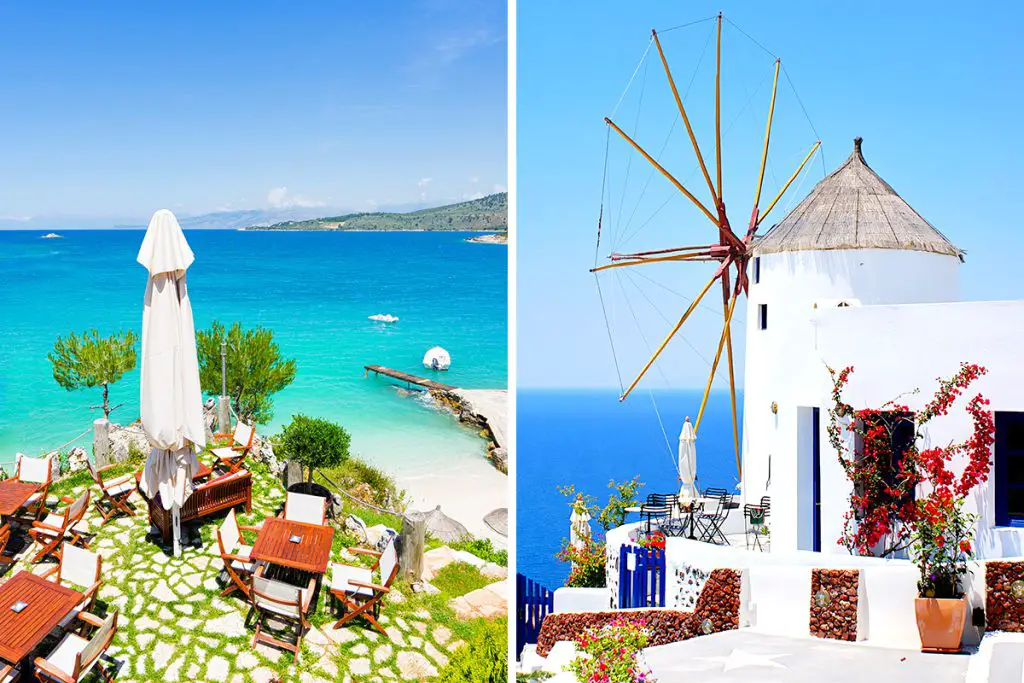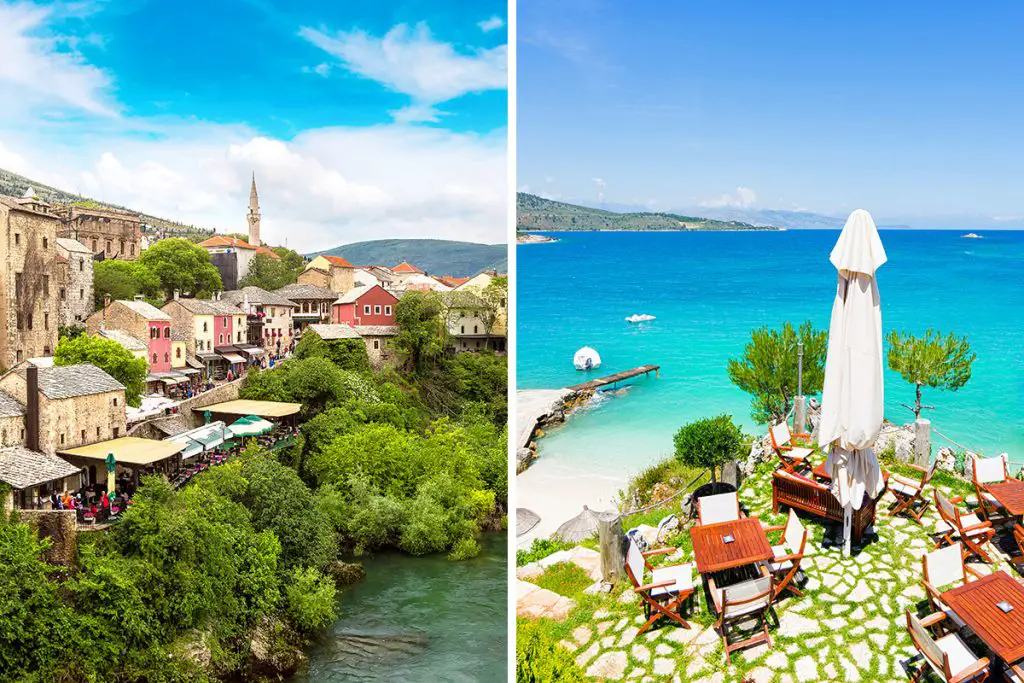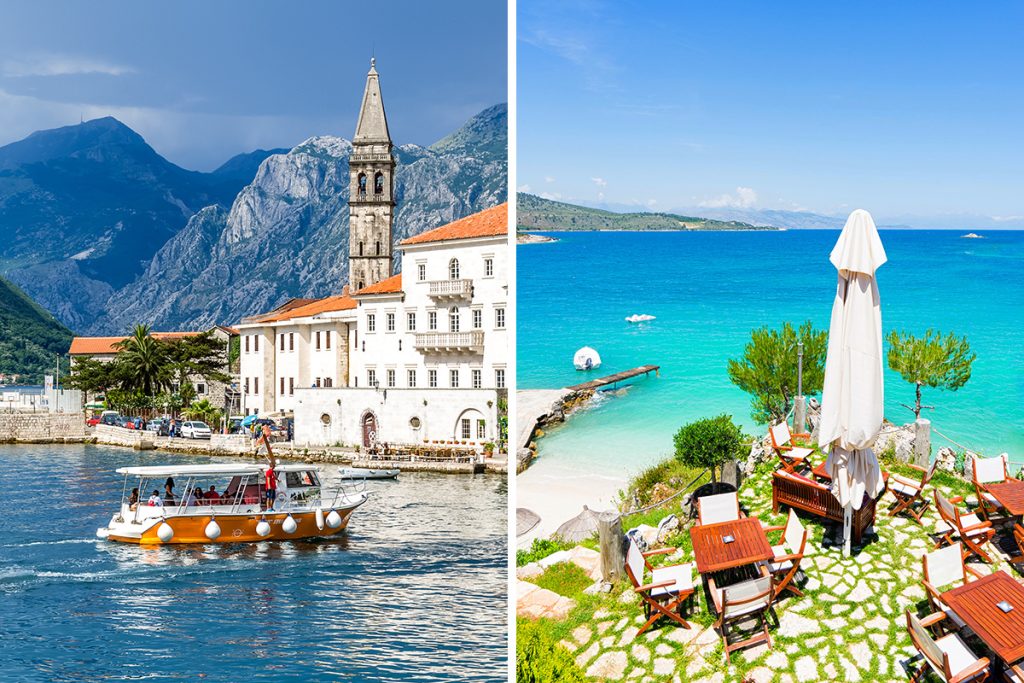Embarking on a journey to either of these destinations opens up a treasure trove of experiences that delve deep into the heart of their unique histories and cultures. Your curiosity is piqued, your imagination is ignited. Now let’s take a step further into understanding the diverse historical and cultural landscapes that make Albania and Croatia the gems they are. Dive in, explore, and allow the stories of these lands to shape your decision.
History & Culture
The past has a persistent way of weaving into the present, especially in lands like Albania and Croatia where history and culture are as vast as they are varied. As you traverse through the timeline, you’ll discover how each country has held onto its roots, yet evolved in its unique way.
Albania, often referred to as the cradle of Balkan history, has seen numerous civilizations grace its land. The Illyrians, Romans, Byzantines, and Ottomans have all left indelible marks on the Albanian culture. The echoes of these ancient civilizations resonate in the architectural marvels, traditional music, and folklore that are integral to Albania’s identity today.
Each historical layer adds a unique flavor to the cultural milieu of Albania, enriching your understanding and experience as you explore.
Meanwhile, Croatia’s tale is equally enthralling, etched with a medieval charm that transcends time. The kingdoms, empires, and republics that once reigned have shaped the national identity, leaving behind a legacy of architectural styles, traditional dances, and linguistic traces.
The blend of Central European and Mediterranean influences creates a cultural panorama that’s distinct yet harmonious. Croatia offers a dive into a rich medieval history that contrasts yet complements the ancient vibes of Albania.
The juxtaposition of Albania’s ancient allure and Croatia’s medieval magnetism creates a fascinating narrative. Their historical timelines, although running parallel, intersect at points of shared history yet diverge where individual identities were forged. This interplay offers a rich backdrop against which your explorations would be set.
In summation, the choice between Albania and Croatia hinges on your penchant for either ancient or medieval history, each offering a rich, unique cultural experience. The stories these countries tell are vibrant, layered, and awaiting your discovery. Your journey into the past is bound to be as enlightening as it is enthralling, setting the stage for a memorable adventure whichever destination you choose.
Attractions & Activities
Embarking on explorations in Albania and Croatia unveils a myriad of attractions and activities that promise to engage your curiosity and thrill your senses. Both countries boast remarkable landmarks and activities that provide a glimpse into their unique identities. As you plan your journey, the allure of discovery awaits.
In Albania, the ancient ruins beckon. Venture to the ancient city of Butrint, where the whispers of the past echo through the centuries-old ruins. Explore the remnants of various civilizations that once flourished here, and let your imagination roam free amidst the archaeological wonders.
Another not-to-be-missed attraction is the Gjirokastër Fortress, standing tall as a testament to Albania’s bygone eras, offering a spectacular view of the Drino Valley below. The activities here are a blend of historical exploration and natural appreciation, stirring the adventurer and historian in you.
Croatia, on the other hand, invites you into a realm of medieval marvels. The towering walls of Dubrovnik captivate with tales of a medieval past, while the Plitvice Lakes National Park awes with its cascading lakes and waterfalls.
Each step in Croatia is an encounter with enchanting landscapes and historical spectacles, engaging your senses in a myriad of ways. The allure of exploring ancient forts and traversing through natural wonders presents a captivating contrast to Albania’s ancient offerings.
Your choice might pivot on the kind of activities and attractions that resonate with you the most. Whether it’s the call of ancient ruins or the charm of medieval structures, each destination holds a unique allure. The activities in both lands promise a rich blend of history, nature, and adventure, catering to a diverse range of interests and preferences.
In summary, the attractions and activities in Albania and Croatia are gateways to exploring the unique narratives and breathtaking landscapes these countries embody. Your choice hinges on what era of history intrigues you more, and the type of natural beauty you wish to immerse yourself in.
Beaches
The allure of crystal-clear waters and pristine shores is undeniable when pondering a visit to Albania or Croatia. Both destinations promise an escape into tranquil and picturesque beach landscapes, each with its unique charm and appeal.
Albania’s coastline stretches over a tranquil 476 kilometers (296 miles), with shores that are less trodden, offering a serene escape. The beaches here are often nestled between majestic mountain ranges, creating a picturesque scene that’s as peaceful as it is beautiful. Discover untouched beauty and secluded spots that provide a perfect escape into nature’s embrace.
Contrastingly, Croatia’s coastline, extending over 1,777 kilometers (1,104 miles) is adorned with a blend of secluded and bustling beaches. The serene shores of Vis Island offer a peaceful retreat, while the vibrant beaches near Split provide a lively atmosphere. Croatia’s beaches are a mix of tranquil hideaways and lively spots, offering a diverse beach experience.
The contrasting lengths of the coastlines also contribute to the different beach experiences. Croatia’s extensive coastline offers a wider variety of beach landscapes and atmospheres, while Albania’s shorter coastline promises intimate, secluded beach escapades.
In conclusion, the beach experiences in Albania and Croatia, while both enchanting, cater to different preferences. Whether it’s the tranquil, untouched shores of Albania or the diverse, lively beaches of Croatia, the choice boils down to your personal preference for seclusion or vibrancy. Each country’s coastline tells a different tale, waiting to be explored and enjoyed to the fullest.
Eating, Drinking & Nightlife
Venturing into the culinary and nocturnal scenes of Albania and Croatia unveils a kaleidoscope of flavors and experiences. Both countries offer unique gastronomic delights and vibrant nightlife, each with a distinctive flair that adds to the allure of your adventure.
In Albania, the eating scene is a flavorful journey through the country’s rich history. Traditional dishes like Tavë Kosi (baked lamb with rice) and Fërgesë (a spicy and tangy vegetable dish) reflect the nation’s diverse culinary influences. The flavors are hearty, and the ingredients locally sourced, offering a humble yet delicious dining experience.
Cross over to Croatia, and you’ll find a culinary scene heavily influenced by Mediterranean and Italian cuisines. Dishes like Pasticada (a slow-cooked beef stew) and Crni Rizot (black risotto) are staples that offer a delightful exploration of Croatia’s regional flavors. The eating experience here is a delicious blend of traditional and modern culinary arts.
As for the drinking culture, Albania offers a range of local wines and raki, a traditional spirit. The vineyards in the countryside provide a quaint setting for tasting sessions, bringing you closer to the land’s authentic flavors.
In contrast, Croatia boasts a thriving wine scene with numerous wineries and a long tradition of winemaking. A sip of Plavac Mali or Malvasia wine is a toast to the country’s rich vinicultural heritage.
When the sun dips below the horizon, the nightlife in Albania offers a cozy atmosphere with local taverns and bars. It’s a laid-back scene where friendships blossom over shared tales and drinks.
On the flip side, Croatia’s nightlife is more vibrant with a plethora of bars, clubs, and festivals, especially in cities like Split and Dubrovnik, offering a lively atmosphere for those seeking a spirited night out.
In summary, whether it’s the culinary delights, the drinking traditions, or the nocturnal vibes, both Albania and Croatia have distinctive offerings. Your preference for a quiet or lively night out, coupled with your culinary curiosity, will steer your choice between these captivating destinations.
Shopping
The experience of shopping in Albania and Croatia is akin to embarking on a treasure hunt, each offering a blend of traditional and modern retail experiences. The variety of shopping venues and the distinctive souvenirs available make both countries a shopper’s delight.
In Albania, the shopping scene is a mix of bustling markets and quaint boutiques. The local markets are a spectacle of colors and flavors, offering a range of handcrafted goods, traditional attire, and locally produced foods. Skanderbeg Square in Tirana houses some lovely shops where you can find unique souvenirs like Qilimi rugs and traditional costumes.
Over in Croatia, the shopping vibe is a blend of chic boutiques and historic markets. Cities like Dubrovnik and Zagreb are home to elegant stores offering Croatian-designed apparel, accessories, and more. The Dolac Market in Zagreb is a traditional farmer’s market where the blend of colors and aromas creates a lively atmosphere.
The craftsmanship in Croatia is showcased in the quality of the handmade goods available, from the finely crafted jewelry to the locally designed apparel. The shopping experience is a blend of the past and present, showcasing Croatia’s rich cultural heritage alongside modern design aesthetics.
In Albania, the emphasis on tradition is palpable in the markets, with a strong sense of community fostering a warm and welcoming shopping environment. The authenticity of the products available reflects the heart and soul of Albanian craftsmanship.
In conclusion, shopping in Albania and Croatia offers a glimpse into the cultural fabric of these nations. The charm of traditional markets in Albania and the elegance of Croatian boutiques provide diverse shopping experiences that enrich your journey, offering unique souvenirs that hold the essence of each country’s heritage.
Accommodation
Nestling into the comfort of a cozy abode after a day of exploration is essential. Both Albania and Croatia offer a range of accommodation options, each reflecting the character and charm of their locales. Whether it’s a quaint inn or a luxurious resort, your stay in either country will be enveloped in a unique ambiance.
In Albania, the accommodation options are as diverse as the landscape. From rustic guesthouses in the heart of the Albanian Alps to charming hotels nestled in historical cities like Berat and Gjirokastër, there’s a place for every kind of traveler. The hospitality is warm and inviting, reflecting the country’s tradition of warmth towards guests.
Croatia, on the other hand, offers a wider range of luxury accommodations alongside budget-friendly options. Whether it’s a modern hotel overlooking the pristine Adriatic Sea or a historic villa in the heart of Split, the choices are abundant. The blend of modern amenities with a touch of Croatian tradition makes the stay memorable.
The range of accommodations in both countries caters to solo travelers, couples, and families alike. The serene environment of Albania’s countryside accommodations contrasts with the more bustling yet equally charming options found in Croatia’s popular tourist cities.
In conclusion, whether you lean towards the rustic charm of Albania or the varied options in Croatia, both countries promise a comfortable stay that enhances the overall travel experience. The hospitable ambiance in both lands ensures a memorable and cozy stay.
Family-Friendliness & Children’s Activities
Embarking on a family vacation necessitates a blend of fun, education, and relaxation. Both Albania and Croatia present a family-friendly atmosphere with an array of activities that engage young minds and provide fun for the whole family.
In Albania, family bonds are cherished, and this is reflected in the country’s welcoming attitude towards families. Children’s activities often revolve around nature and exploration, like easy hikes in Theth National Park or exploring the ancient ruins in Butrint with a guide to spark their imagination.
Croatia, with its array of historical sites and natural wonders, also provides a fertile ground for a family adventure. Activities like exploring the Diocletian’s Palace in Split or taking a guided tour of Plitvice Lakes National Park are both educational and fun for children.
The activities in both countries provide a mix of outdoor adventures and historical exploration, promoting a fun learning experience. While Albania offers a more rugged and nature-oriented experience, Croatia provides a balanced mix of nature and history.
Getting There & Getting Around
The journey to and around Albania and Croatia is a part of the adventure that contributes to the overall experience. Both countries have their unique attributes when it comes to accessibility and local transportation.
Getting to Albania can be achieved via its international airports in Tirana (Tirana International Airport Nënë Tereza) or by ferry from Italy or Greece. Similarly, Croatia is well-connected with international airports in cities like Zagreb, Split, and Dubrovnik. Moreover, numerous ferries and cruises connect Croatia to various Mediterranean countries, making it a more accessible option.
When it comes to getting around, Albania offers a network of buses and furgons (shared vans) that navigate through cities and rural areas. However, renting a car might provide a more convenient and flexible way to explore the diverse landscapes.
In Croatia, the transportation network is more developed with buses, ferries, and a reliable network of taxis. The country also has a better-established infrastructure for car rentals, providing an easy way to hop from one city to another.
In conclusion, while both countries are accessible, Croatia offers a more streamlined experience in terms of both reaching the country and maneuvering through its picturesque landscapes. The ease of transportation in Croatia contrasts with a more adventurous, off-the-beaten-path vibe in Albania, each adding a unique flavor to the travel experience.
Weather
The embrace of the weather significantly influences the flavor of your travels. Albania and Croatia, with their distinct climatic conditions, offer different atmospheres that shape the experience of your adventure.
Albania enjoys a Mediterranean climate characterized by summers that are hot and dry and winters that are mild and rainy.
The summer months from June to August see temperatures ranging from 75°F to 95°F (24°C to 35°C), offering a warm ambiance for explorations. In contrast, the winter months from December to February are milder with temperatures hovering between 45°F to 60°F (7°C to 16°C).
Croatia’s coastal regions share a similar Mediterranean climate with Albania, having hot summers and mild winters.
However, the summer months in cities like Dubrovnik and Split are slightly cooler, with temperatures ranging from 70°F to 85°F (21°C to 29°C). The winters here are also milder, with temperatures between 40°F to 55°F (4°C to 13°C) from December to February.
Both countries exhibit a cooler climate in the inland regions, with temperatures dropping significantly in the winter months, often below freezing, especially in the mountainous areas.
The transitional seasons of spring and autumn are pleasant in both countries, with moderate temperatures and fewer crowds, making it an ideal time for those seeking a quieter travel experience.
In conclusion, both Albania and Croatia offer a warm, inviting climate during the summer, with milder winters along the coast. Your choice might be swayed depending on your preference for hotter or cooler summer days, and the level of adventure you seek in exploring the inland regions during the winter.
Safety
The assurance of safety enhances the comfort and enjoyment of any travel adventure. Both Albania and Croatia are known for being safe destinations, each with its unique aspects that contribute to a secure travel experience.
Albania is generally a safe country with a low crime rate. The locals are known for their hospitality and are often willing to go the extra mile to assist travelers. However, it’s advisable to exercise standard precautions, like keeping valuables secure.
Croatia also boasts a low crime rate and is often considered one of the safer countries in Europe. The well-patrolled tourist areas and responsive emergency services add to the feeling of safety while exploring the beautiful landscapes and historic cities.
In terms of unique non-crime-related safety topics, both countries have well-maintained roads, but Albania’s road network is less developed compared to Croatia, which might pose challenges when driving, especially in remote areas.
In summary, both Albania and Croatia hold safety in high regard, ensuring a comfortable and secure ambiance for travelers. The general safety and additional precautions in Croatia contrast with the rugged, yet equally safe, environment in Albania.
Cost
The cost of travel is a vital factor that shapes the choices of destinations. Both Albania and Croatia offer unique experiences that cater to different budget ranges.
Albania is known for being a more budget-friendly destination. The cost of food, lodging, and transportation is relatively lower. A 3-course meal at a mid-range restaurant might cost around 1,600 Albanian Lek (about $16), while a night at a three-star hotel could be around $60. Public transportation is also quite affordable, with bus fares often under 100 Lek (under $1).
On the other hand, Croatia costs more because it is a more favored destination for tourists. A meal at a similar mid-range restaurant might cost around 25 euros (about $27), and a night at a three-star hotel might be around $130. The cost of public transportation is also higher, with average bus fares around 15 Kuna (about $2).
Despite the cost differences, both countries offer a range of options to cater to both budget and luxury travelers. The choice between a more budget-friendly Albanian adventure and a slightly pricier Croatian experience depends on individual financial considerations.
Which Is Better – Albania or Croatia?
Embarking on a journey to either Albania or Croatia is stepping into lands rich with history, culture, and natural beauty. However, the nuances in the experiences they offer might cater to different preferences and expectations.
The historical and cultural tapestry of Albania and Croatia sets a rich backdrop for exploration. While Albania’s ancient allure captivates with layers of civilizations that have graced its lands, Croatia’s medieval charm provides a riveting narrative of kingdoms and republics.
The architectural marvels and traditional practices in both countries are a voyage through time, each distinct yet equally captivating.
When it comes to attractions and activities, Albania invites you with a blend of historical exploration and natural appreciation, whereas Croatia extends an invitation to delve into medieval marvels amidst enchanting landscapes.
The difference in experiences here might enthrall different types of adventurers, whether it’s the call of ancient ruins or the charm of medieval structures.
The serene shores of Albania offer a tranquil beach experience, contrasting with the diverse and lively beaches of Croatia. Your preference for seclusion or a vibrant beach scene could steer your choice between the tranquil waters of Albania or the bustling shores of Croatia.
The culinary scene in Albania is a humble yet delicious affair with a laid-back nightlife, while Croatia offers a blend of traditional and modern culinary delights alongside a more vibrant nocturnal scene. The drinking culture in both lands showcases a rich vinicultural tradition, albeit with a different ambiance.
Shopping in Albania is an authentic experience with traditional markets and locally crafted goods, whereas Croatia offers a blend of chic boutiques and historic markets. The craftsmanship and modern design aesthetics in Croatia provide a different shopping atmosphere compared to the warm, community-centric markets of Albania.
The variety of accommodations, family-friendly activities, ease of transportation, and general safety in both countries cater to a broad spectrum of travelers. However, the budget-friendly nature of Albania might appeal to the cost-conscious traveler, while Croatia’s more streamlined transportation and varied accommodation options cater to those seeking a bit more luxury.
In summary, the choice between Albania and Croatia hinges on personal preferences in historical eras, activity types, beach atmospheres, culinary experiences, shopping desires, and budget considerations.
Albania might beckon if you’re seeking a budget-friendly, nature-centric, and authentic experience. Conversely, Croatia could be your choice for a more luxurious, historically medieval, and lively beach scene journey. Each destination holds its unique charm and experiences, ready to create cherished memories in the heart of every traveler.

